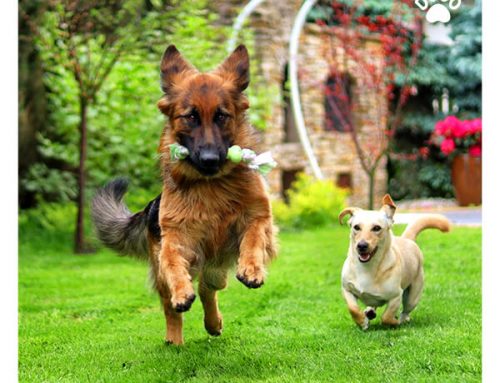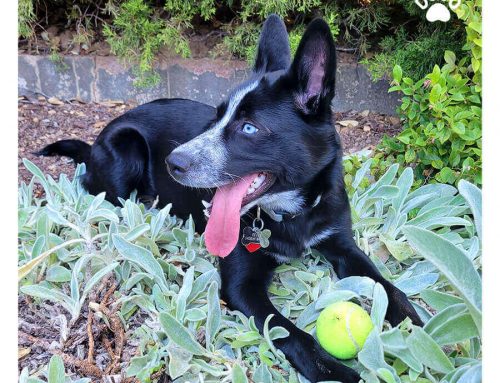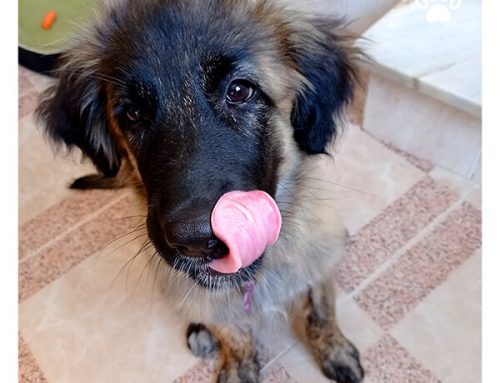
How often should I feed my dog?
Depending on your dog’s age, you should feed your dog from 3 times to once a day. Ideally, until 3 weeks of age, a puppy should drink mum’s milk. From the 3rd week, you can slowly introduce the dog to puppy food. Normally, the puppies are weaned at the age of 6-8 weeks. This is when you should have a meal scheduled 3 times daily.
From 6 months to when the dog is matured you can switch the feeding schedule to twice daily.
Dogs mature at a different age, depending on the breed. Toy breeds like chihuahuas, miniature pinschers, toy poodles reach maturity with 10 months of age. Small breeds like west highland terriers, dachshund with 12 months. Large breeds like labrador retrievers, pointers are considered adults once they reach 15 months. Giant breeds, e.g. Newfoundland, Great Danes are still growing until they reach 24 months. Until the dog is matured, it is important to feed them twice per day, because the digestive process is very fast and feeding once could cause low glucose levels in the blood.
It is important to note that these age ranges are simply guidelines, and each dog is unique. Some dogs may reach maturity earlier or later than the average for their breed. It is important to monitor your dog’s growth and development to determine when they have reached maturity. It is important to provide your dog with consistent feeding times to help regulate their digestive system. If you need to change your dog’s feeding schedule, it is important to do so gradually to avoid upsetting their stomach. Additionally, it is important to provide your dog with access to fresh water at all times to help keep them hydrated.
How much should I feed?
How much food should you give really depends on the type of food you feed and on your dog’s size, age, activity level.
Some raw estimates of the minimum calorie requirement per kilogram you can find in the tables provided. This is a minimum nutritional requirement of an adult dog who has “normal” activity levels and has no health, physiological conditions.
To be more precise and to calculate the caloric requirements for your dog, you can refer to this article.
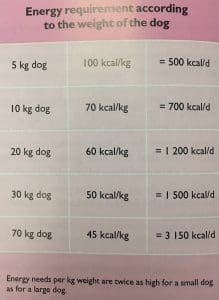
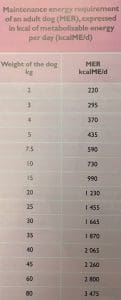
How to know my dog tolerates the food?
There are several ways to determine if your dog is tolerating their food well. One way is to monitor their stool. Good quality food should produce small, firm, and moist stools. If your dog’s stool is consistently loose, this may indicate that they are not digesting their food properly. Another way to determine if your dog is tolerating their food well is to monitor their skin and coat. A healthy diet should provide all the essential nutrients that your dog needs for healthy skin and coat. If your dog’s skin is dry or flaky, or their coat is dull, this may indicate a nutritional deficiency. Additionally, if your dog is vomiting or experiencing diarrhea, this may indicate food intolerance or an underlying health issue. If you notice any of these symptoms, it is essential to consult with your veterinarian.
Make sure that you change your dog’s food gradually. You should switch from the old food to the new one gradually, not quicker than in one week. That means every day, mix in some new food, increasing the proportion of new food in the food bowl. A sudden change in the diet can cause diarrhea and vomiting. These are also signs of food intolerance. Other possible signs can be dandruff, itchy skin, building up of gas.




